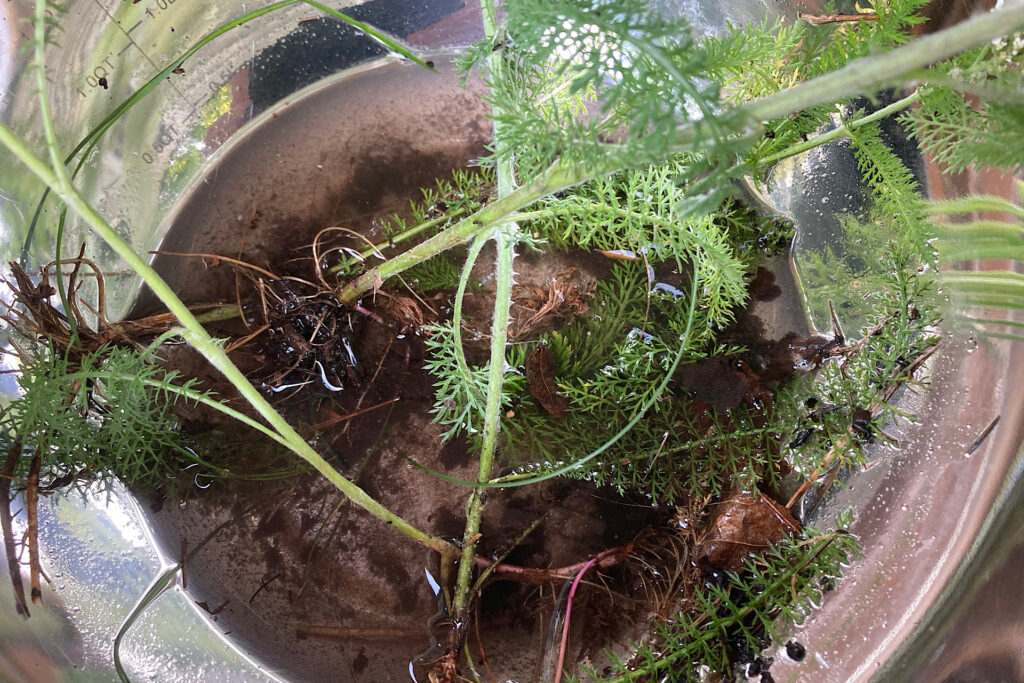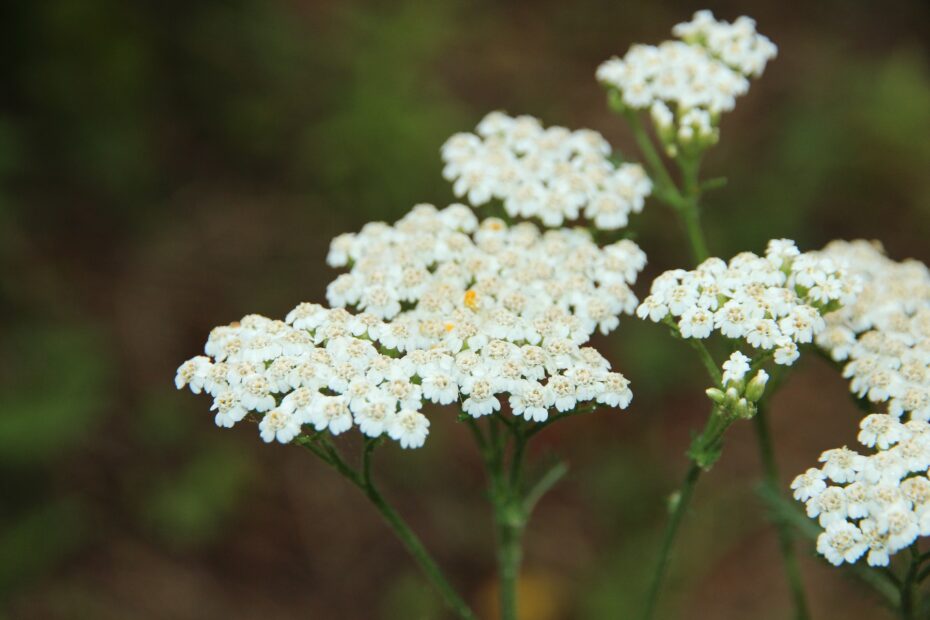What is common yarrow and why is it a beneficial addition to flower or vegetable beds? Yarrow is a low-maintenance superstar that possesses a variety of favorable attributes in the garden. Aside from attracting pollinators and deterring pests, it stands on its own as an attractive cut and dried flower. Historically, common yarrow has been used as a medicinal herb, as a bittering or flavoring botanical in the brewing process, and as a fertilizer/soil nutrient.
What is Common Yarrow?
According to The United States Department of Agriculture, common yarrow’s botanical name is Achillea Millefolium and it is part of the daisy family (Asteraceae). It is also known by a number of other names, including: milfoil, soldier’s woundwort, bloodwort, nose bleed, sanguinary, thousandleaf, stenchgrass, old-man’s-pepper and and devil’s nettle. It can be grown as a native or a cultivar.
Yarrow is a hairy, aromatic perennial with umbellifer flowers. An umbel is an inflorescence (cluster of flowers) that is made up of short stalks that spread from a common point, resembling the ribs of an umbrella. Up close, the flower heads look like tiny, individual daisies arranged in dense clusters. The foliage of common yarrow is soft and fern-like.
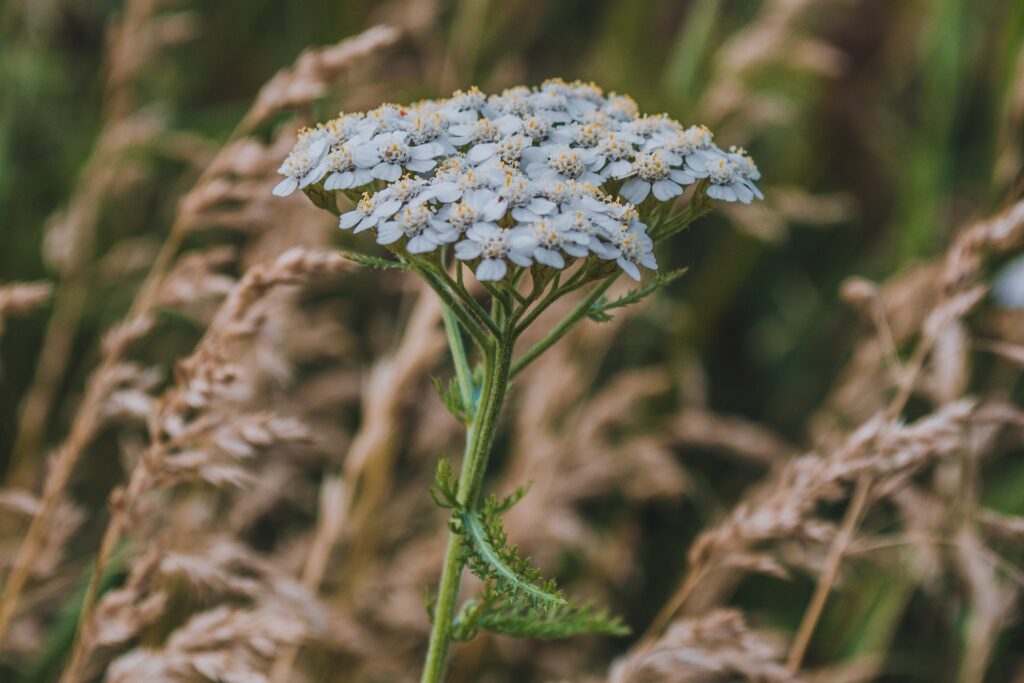
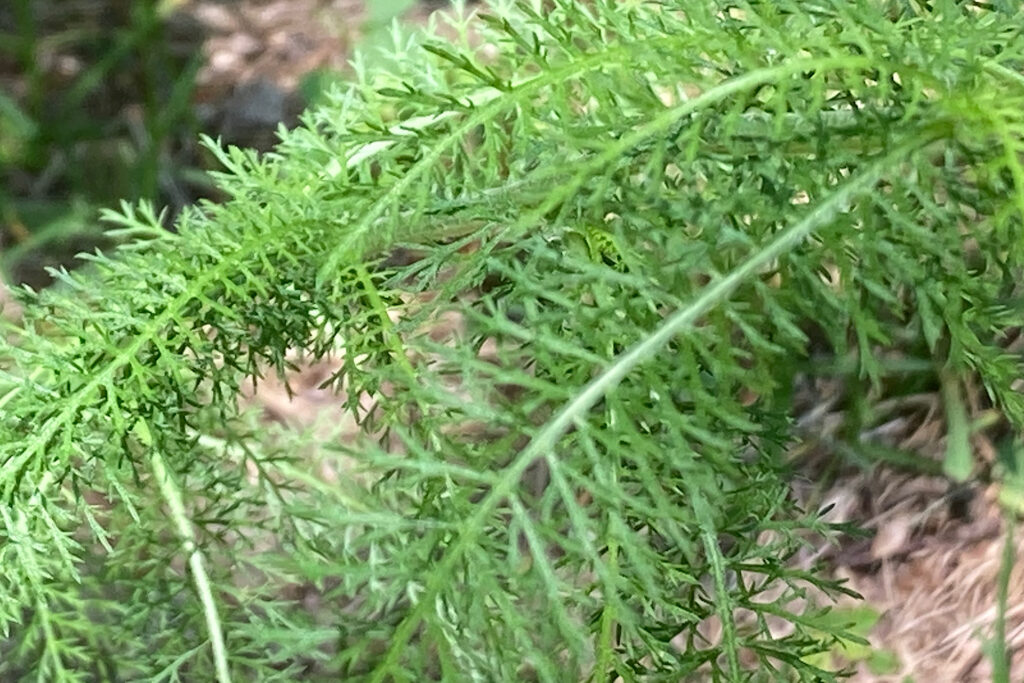
Growing Conditions For Common Yarrow
Common yarrow grows as a perennial native wildflower from USDA zones 3 – 9. Where I reside, (zone 5b), white common yarrow grows by the roadside and blooms freely in fields and meadows. Our flowering season begins in July and continues to mid-September. Bloom time can run from April to October, however, in warmer regions.
Yarrow can also be purchased as a cultivar. Cultivars are cultivated plant varieties produced by selective breeding. Yarrow purchased at a nursery is available in an array of colors; from tinted pastels to bright yellows, reds, and oranges. I remain partial to the classic white variety native to my area.
Common wild yarrow is a low-maintenance flower variety that does very well on its own. Locally, I’ve found healthy plants growing vigorously from cracks in the pavement. A mature plant can reach 3-4 feet in height. It thrives in a sunny location with well drained soil.

Why is Common Yarrow Beneficial in the Garden?
Common yarrow attracts favorable insects and pollinators into a flower or vegetable bed. These include, but are not limited to: butterflies, bees, predatory wasps, lacewings, ladybugs and hoverflies. Many of these insects have voracious larva that keep unfavorable pests in check. As a side benefit, yarrow is prized for being deer and rabbit resistant. Additionally, its natural oils are known to repel mosquitos.
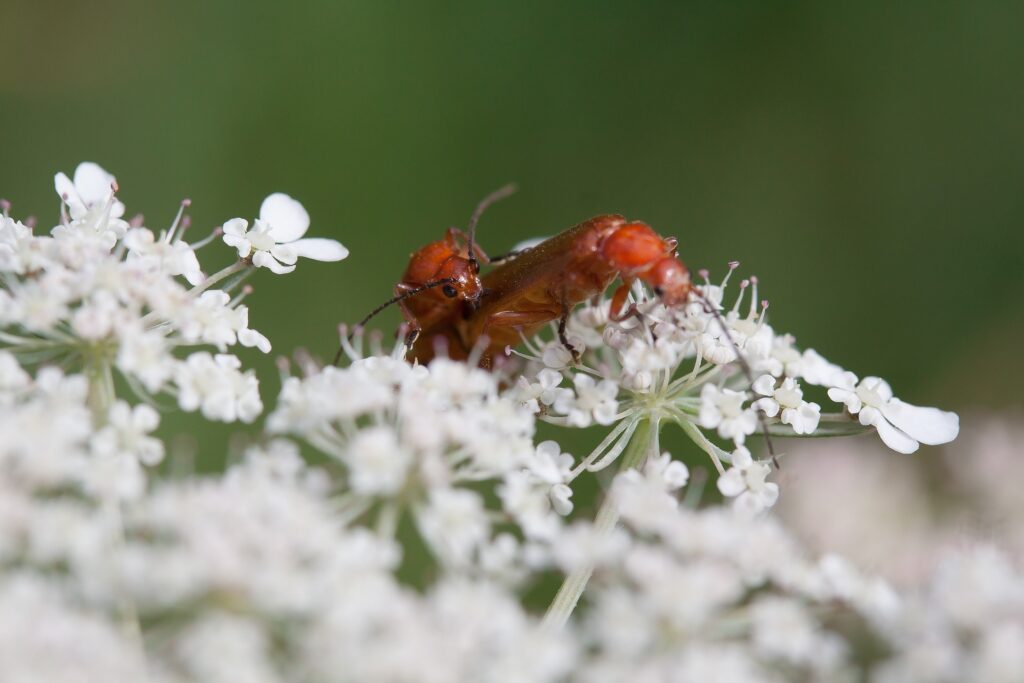
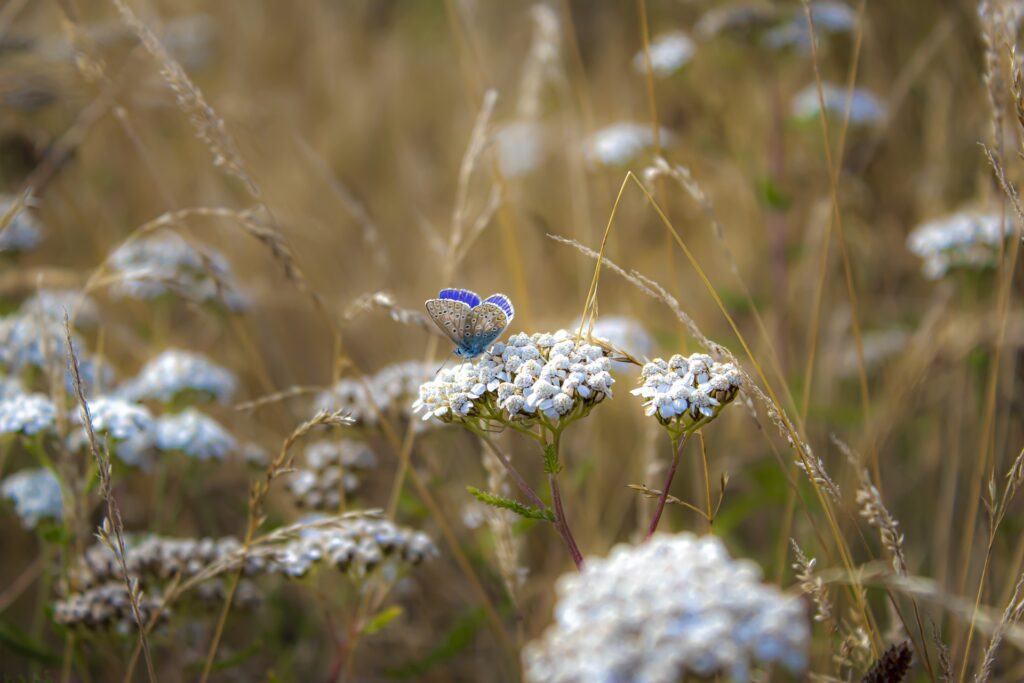
Common yarrow also provides food and protection for wild birds. Besides nectar, hummingbirds consume a large quantity of small insects. Plants such as yarrow and milkweed produce flower clusters that attract those tiny insects that serve as hummingbird nutrition. Yarrow umbels also serve as convenient perches for other birds that visit the garden.

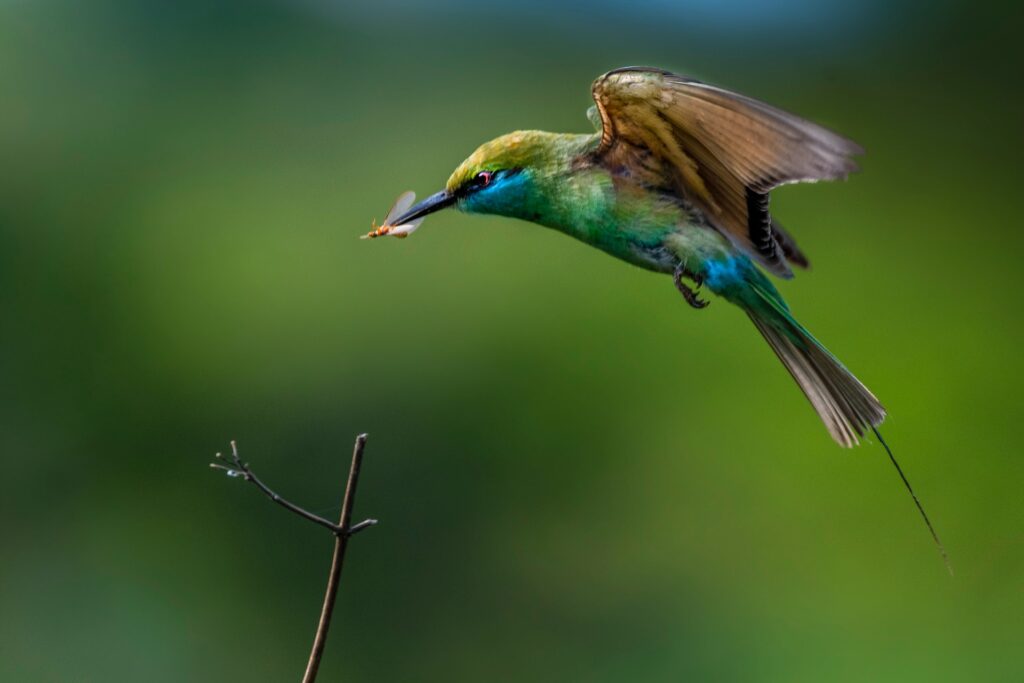
Uses for Common Yarrow
Historically, yarrow was used for medicinal purposes such as treating indigestion and to staunch bleeding of minor wounds. In medieval times, yarrow was used as an ingredient in beer and mead. Some people still use it today as a substitute for hops and barley. I do not have a knowledge base in either of these areas, and would refer you to a physician or brewer for further explanation. My interest is tied to the garden.
I’ve already touched on it’s benefits as a flower or vegetable garden companion plant. Common yarrow also has the ability to perform as a fertilizer. It is recommended to grow yarrow under fruit trees to intensify fruit production. Chop it and use it as a as mulch or compost to boost nutrient content in garden soil.
Common yarrow can also be displayed beautifully in cut flower bouquets or make a statement as a single stem. I’m a huge advocate of backyard bouquets and this is a strong and long-lasting bloom to experiment with. The stalks can be dried and hold up well in fall and winter arrangements. Outdoors, they add visual appeal to the winter landscape and are utilized by wildlife for seeds and as perches
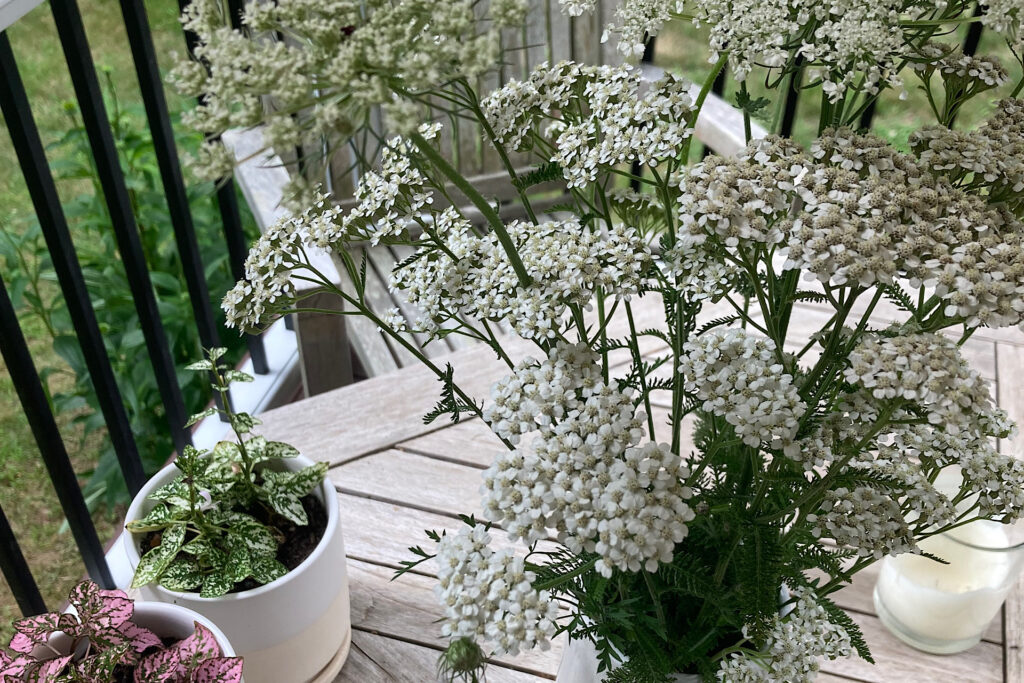

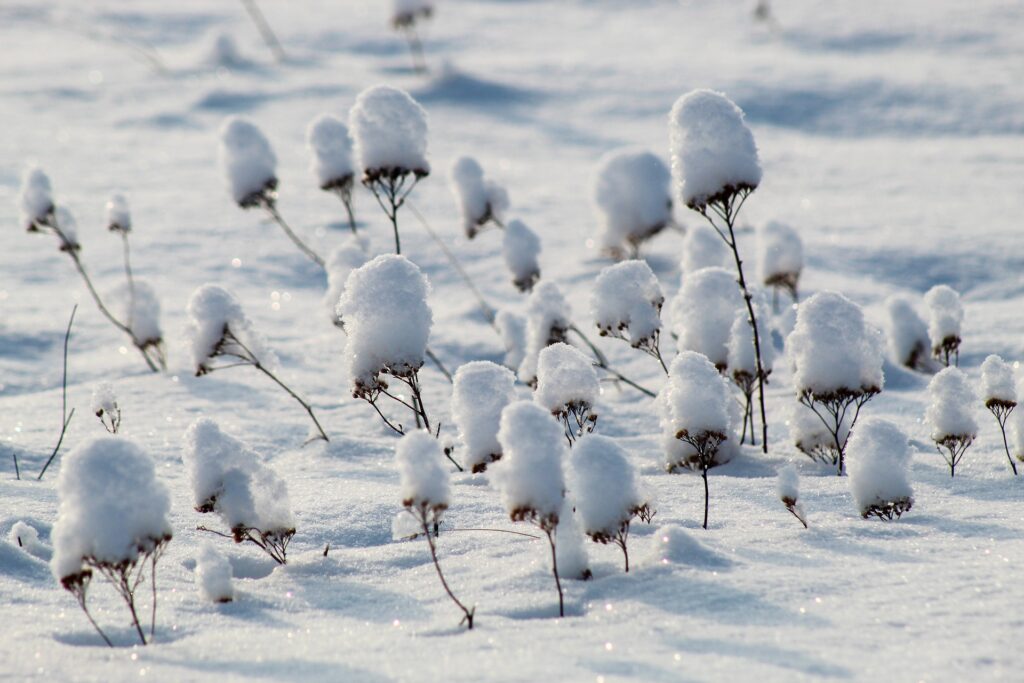
Planting and Propagating Yarrow
Common yarrow requires full sun and good drainage. Average garden soil is ideal, but yarrow is drought-tolerant and will grow in below-average to poor soil. In truth, if the growing medium is rich or fertilized, common yarrow will become leggy and flop over. If this happens, it may require pruning and staking to hold it upright. I have transplanted some into my vegetable garden this year. If it finds the soil too rich, I will move it to a nearby location so it can thrive on its own, yet still provide my garden beds with the benefits it has to offer.
Once established, common yarrow will grow into a clump of foliage. This clump will grow wider and wider over time and can become an aggressive spreader. It’s good practice to divide it every 3-5 years. This will prevent overcrowding. The divided pieces can be moved to other locations. When transplanting or if pulling up in a meadow or roadside, keep the roots damp and don’t let them dry out.
Common yarrow grows easily from seed and will self-sow. If you are intentionally planting from seed, you will need to surface-sow as the seeds require light to germinate.
This is a very low-maintenance plant that will provide endless benefits to your garden space. Enjoy!
